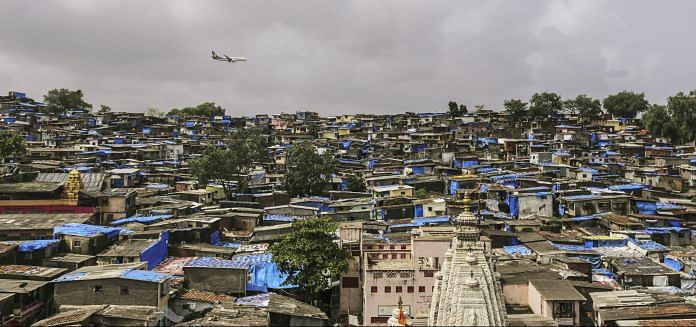‘Poverty tourism’ in the slums of Mumbai shows a superficial understanding of the problem.
Using poverty to sell an idea has become a growing industry these days. The phenomenon is commonly known as poverty porn and famine porn. From the famous New York Times photo of the vulture and the little girl to the Alessio Mamo photo essay of poor Indians ‘dreaming food’ to the idea of happy children drowned in shit in Slumdog Millionaire.
The latest trend is ‘poverty tourism’. An NGO member from the Netherlands is helping residents of the Khar Danda slum in Mumbai run an AirBnB-esque system where foreign tourists can stay and mingle with locals.
The troubling objective of this project is to “change the image of slums” by “experiencing poverty”, which sounds like a long-winded way of calling it an exotic vacation where foreign tourists can post images of poverty on Facebook. There are glaring flaws in this idea. At best, certain individual families make money on the side; at worst, it continues to enable slums and make them thrive.
Also read: Poverty porn sells, but it isn’t helping the poor
Sixty per cent of Mumbai lives in slums, claims the Al Jazeera video about the initiative, and yet the project aims to the tackle this with individuals instead of the system. It invites tourists to enjoy the misery and impoverishment in a slum, oblivious to the fact that by doing so they are mocking the poor.
David Bijl, the Dutch person who came up with this idea, did so after staying in Ravi Sansi’s house for a day. Sansi lives in the slums of Mumbai and is partnering with Bijl in the project. But is a day really enough to figure out how practical this plan is and what its repercussions would be?
Slum systems come with their own problems. Drug abuse and violence against women are statistically higher, making tourists — especially foreigners — vulnerable. They often tend to be breeding grounds for diseases and are regularly razed as well.
The problem with this initiative also lies in what the outcome of it is: This NGO’s project was started to benefit individual families, as the video states. But how much does it benefit all the others? If the programme is a runaway success, and several of those individuals or families break out of their economic status, would they continue to keep the concept alive? Would that keep them within the confines of the slum instead of moving to a more developed area or even wanting to develop their neighbourhood? Would that, in turn, keep more people in poverty?
Also read: Muhammad Yunus on what he does best: removing poverty, unemployment and carbon emission
A Western Caucasian individual aiming to tackle a developing nation’s problem perpetuates the idea that Western nations are saviours. Organisations such as UNICEF have also come under heavy criticism for imagery depicting ravaged, malnourished children in poverty to help raise donations, despite the donations being for those very children.
The idea that the poor are incapable of breaking out of their situation without the help of a Western organisation or individual is deeply disrespectful of their own agency. And a large part of this problem lies with how the media covers such an initiative as well.
Despite the fact that slum tours exist already in Mumbai and are advertised heavily, it is what Bijl did that drew the cameras. And when foreign tourists start putting up pictures and writing blogs about their experiences, the stories of Mumbai slums will come out through them and not the actual people living there.
Also read: Poverty or inequality: What is more important for India and Indian economists
The entire thing might, in fact, turn out to be mere voyeuristic and quite counter-productive to its own cause. Nigerian writer Chimamanda Ngozi Adichie famously said, “The problem with stereotypes is not that they are untrue, but that they are incomplete. They make one story become the only story.” This holds true for Bijl and Sansi’s idea as well, the coverage of which eliminates the fact that slums are large structures with their own hierarchies and complexities, instead portraying them as a unidimensional network of squalor.




Behind the Beautiful Forevers by Katherine Boo in 2012 was a heartwarming book about life in a Bombay slum near the airport. It pulses with the energy, creativity and hope that defines the “ spirit of Bombay “, a much misused term when the city gets clobbered.